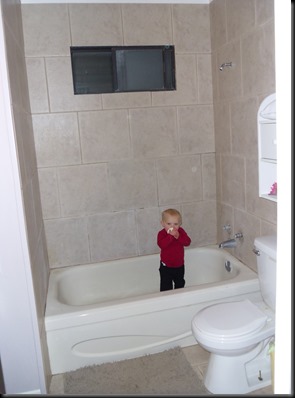We knew there was water behind the tile as the grout would be wet after we would come home from being away for the weekend, but we weren’t prepared for how much water was behind the wall.
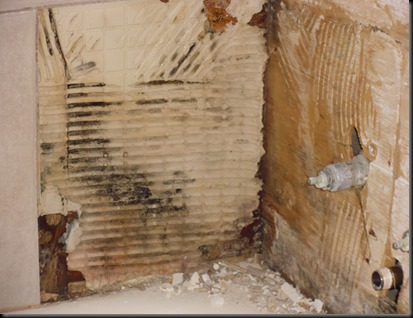
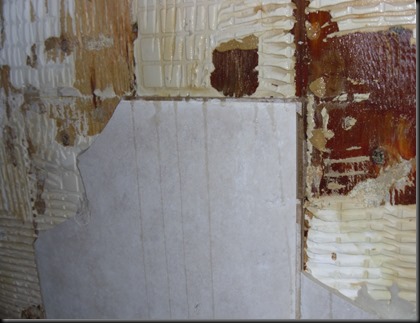
The whole substrate was soaking wet with water. We were now able to identify why were having some of the problems. As you can see from the pictures you can see the screed marks from the trowel when the tile was placed on the wall, with some small indentations from the tile in it. Wall tile should be "back-buttered” which means to put some mortar on the back of the tile as well as on the wall. This helps the two adhere to each other better. So the screed marks are good channels for the water to run along, and being on an exterior wall somewhat susceptible to freeze thaw cycles that we experience here in Calgary. The lack of adhesion was also noticed when were were knocking tiles off with a light blow with the hammer and several tiles would fall off the wall.
Another major problem was the fact that the backing board was plywood. In other locations plywood is a great substrate for tile, but in a bathroom wall it should really be tile backer board or cement board and a waterproof membrane is not a bad idea either. As can be seen above the plywood was soaked as well and developing mould in places, so off it came.

As the bathtub is 60” long there is a joint in the plywood. You can see that the plywood was placed vertically and the joint was placed on side nearest the faucet and fixtures.
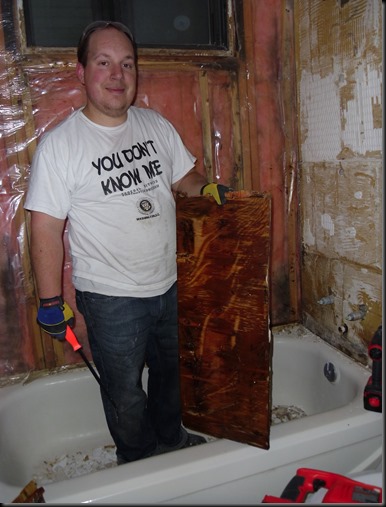
The plywood is soaked on the back side of the plywood. Notice that there is a window in the wall so the plywood joint comes basically in the bottom corner near the faucet and fixtures. This should be avoided if possible so that if water were to migrate through finish it cannot make it to the structure and do damage there. The insulation had been changed from the original, and I know this because there was yellow batts of fiberglass insulation tucked down beside the tub. The vapour barrier that was used was a flimsy poly and was not adhered to the studs with anything more than staples. There is a proper poly for vapour barrier and an acoustical sealant should be used as well to stop air flow around the poly.
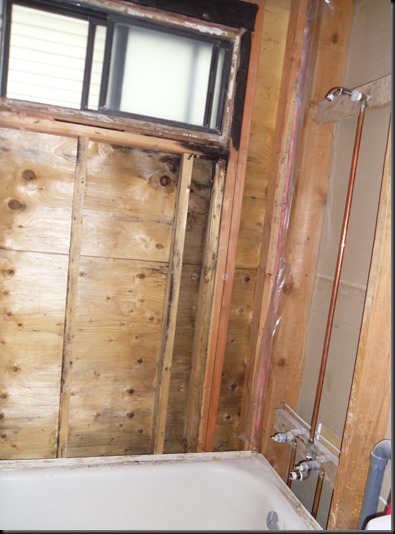
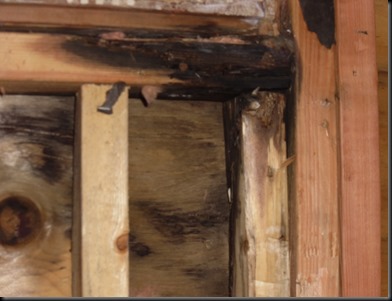
As you can see the sill joist and the jack stud were severally rotten due to moisture that had penetrated in the past. I was surprised though that that would was dry. The damaged had been done earlier in its 32 years of life.
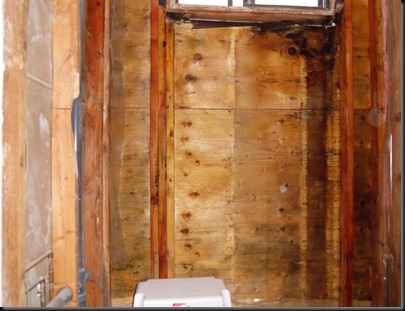
So out came a couple of studs and the sill for the window and one of the cripple studs came out partially to sound wood.
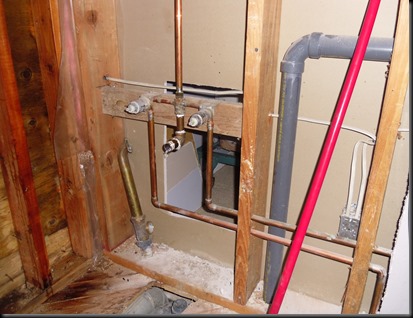
The last part of the demolition came with the tub removal. There was an access hole through the wall in my daughter’s room, but it was not big enough to work comfortable in so I made it bigger. I had to reach down under the tub and unscrew the P-trap fittings and the overflow drain. That was all that was holding the tub in place. I just had to lift it out, which takes a bit of effort with the steel tubs.
On the next post we will start to put it back together.
